Do you ever wonder how horseback riding can impact your core strength? It may seem like just a leisurely activity, but believe it or not, horseback riding actually engages your core muscles in ways you may not expect. In this article, we’ll delve into the topic of horseback riding and its impact on core strength, exploring the physical benefits of this equestrian activity. You’ll be surprised to learn how riding a horse can actually help you develop a stronger core.
When you think about horseback riding, you might picture a relaxed ride through fields and trails, but the truth is, it takes a lot more effort than it seems. The act of sitting tall and balanced on a moving horse requires your core muscles to constantly engage and stabilize your body. This continual adjustment and engagement of your core muscles help improve your posture and overall core strength. In addition, the motion of the horse’s gait, whether it be a smooth trot or a bouncy canter, activates your core muscles to keep you balanced and centered in the saddle. So, if you’re looking to strengthen your core muscles while enjoying the beauty of nature and the joy of bonding with a horse, horseback riding might just be the perfect activity for you. Stay tuned for more detailed information on how horseback riding impacts your core strength in our upcoming article on “http://horsebackridingdude.com”!
Horseback Riding and Its Impact on Core Strength
Horseback riding is an exhilarating activity that not only allows individuals to connect with these magnificent animals, but also provides numerous physical and mental benefits. One of the major areas of the body that is engaged and strengthened through horseback riding is the core. The core muscles, which include the abdominal muscles, back muscles, hip muscles, and leg muscles, play a crucial role in maintaining stability, balance, and posture while riding.
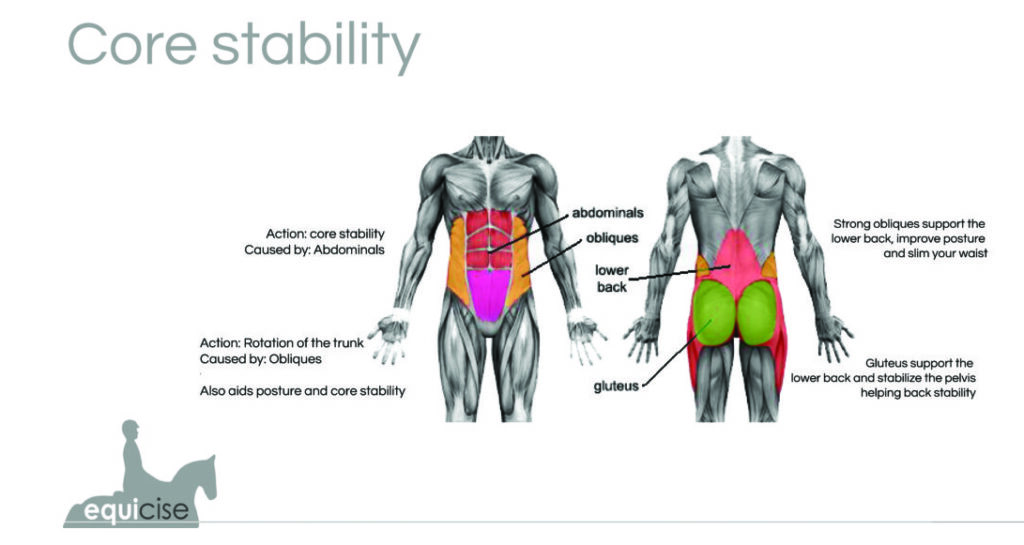
Types of Horseback Riding
Before we delve into the impact of horseback riding on core strength, let’s first explore the different types of horseback riding:
English Riding
English riding is a discipline that originated in Europe and is focused on precision, finesse, and proper equitation. It typically involves a forward seat and the use of a direct rein connection with the horse. This style of riding is commonly seen in disciplines such as show jumping, dressage, and eventing.
Western Riding
Popular in the western regions of the United States, western riding is associated with activities like ranch work, rodeo events, and trail riding. Western riders typically use a deeper seat, longer stirrups, and a looser rein connection with the horse. It emphasizes a relaxed and balanced posture for both horse and rider.
Dressage
Dressage is a highly skilled and disciplined form of riding that requires elegance, precision, and harmony between horse and rider. It is often referred to as “horse ballet” and focuses on the meticulous execution of intricate movements and patterns. Dressage riders work to develop a strong and supple core to effectively communicate with their horses.
Trail Riding
Trail riding involves exploring scenic outdoor landscapes on horseback. This leisurely activity is enjoyed by riders of all ages and experience levels. It allows individuals to unwind and connect with nature while also providing a great workout for their core muscles.
Now that we have a better understanding of the different types of horseback riding, let’s explore how this activity specifically impacts core strength.
Benefits of Horseback Riding for Core Strength
Engaging in horseback riding on a regular basis offers several benefits for strengthening the core muscles, including:
Improves Posture and Balance
Maintaining proper posture and balance is crucial for riders of all levels. Horseback riding naturally promotes an upright posture, as riders need to align their body with the horse to maintain stability. This constant adjustment helps improve overall posture and balance, leading to a strengthened core.
Increases Stability
The dynamic movement of a horse’s gait challenges the rider’s stability and engages the core muscles. Both the horse and rider need to work in harmony to maintain balance and control. This constant balancing act forces the core muscles to engage and strengthen, ultimately enhancing stability.
Engages Core Muscles
Horseback riding requires a strong and stable core. The core muscles play a vital role in supporting the spine, maintaining balance, and controlling the movements of the horse. Consistently engaging these muscles during riding sessions helps to strengthen and tone them over time.
Enhances Coordination
Coordinating subtle cues with the horse through the use of reins, seat, and legs is essential for effective communication. This coordination requires the synchronization of various muscle groups, including the core. Regular practice of these coordination skills during horseback riding sessions can contribute to improved overall coordination and core strength.
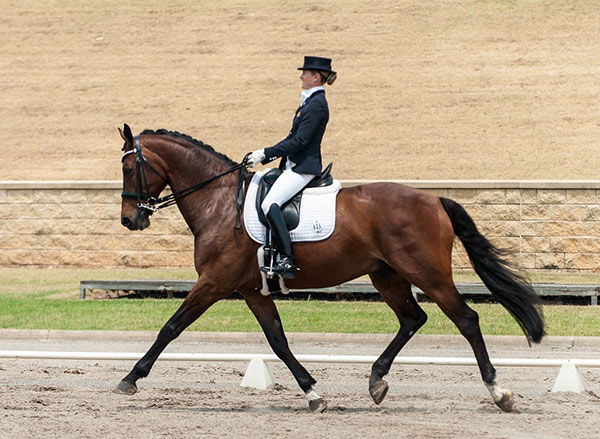
Muscles Engaged in Horseback Riding
To better understand the impact of horseback riding on core strength, let’s take a closer look at the specific muscles that are engaged during this activity:
Abdominal Muscles
The abdominal muscles, including the rectus abdominis, obliques, and transverse abdominis, are actively engaged while riding. These muscles help stabilize the core and provide support to the spine, allowing riders to maintain an upright position and absorb the movements of the horse.
Back Muscles
The back muscles, such as the erector spinae and latissimus dorsi, play a vital role in maintaining proper posture and balance while riding. These muscles work in coordination with the abdominal muscles to keep the spine aligned and stable.
Hip Muscles
The muscles around the hips, including the glutes and hip flexors, are heavily engaged during horseback riding. These muscles contribute to the rider’s ability to maintain a balanced and secure seat in the saddle, while also allowing for proper leg positioning and cueing.
Leg Muscles
The muscles of the legs, including the quadriceps, hamstrings, and calves, are constantly at work while riding. These muscles provide stability and support to the rider’s lower body, allowing for effective communication with the horse through leg cues.
Engaging these muscles during horseback riding not only strengthens the core, but also contributes to overall muscular development and toning.
Exercises to Strengthen Core for Horseback Riding
While horseback riding itself is a great way to strengthen the core, incorporating specific exercises can further enhance core strength and stability. Here are a few exercises that can be beneficial for riders:
Planks
Planks are a highly effective exercise for strengthening the entire core. Start by assuming a push-up position, resting on your forearms instead of your hands. Keep your body in a straight line from head to toe, engaging the abdominal muscles. Hold this position for a designated amount of time, gradually increasing the duration as your core strength improves.
Bridges
Bridges target the glutes, hamstrings, and core muscles. Lie on your back with your knees bent and feet flat on the ground. Lift your hips off the ground, forming a straight line from your knees to your shoulders. Squeeze your glutes and engage your core as you hold the position for a few seconds before slowly lowering back down. Repeat for several repetitions.
Russian Twists
Russian twists specifically target the oblique muscles, which are important for rotational movements in horseback riding. Sit on the ground with your knees bent and feet lifted slightly off the floor. Clasp your hands together in front of your chest and lean back slightly, engaging the core. Twist your torso to one side, bringing your clasped hands towards the floor beside your hip. Return to the starting position and twist to the other side. Repeat for multiple sets.
Supermans
Supermans target the back muscles, which are vital for maintaining posture and stability while riding. Lie face down on the ground with your arms extended overhead. Simultaneously lift your arms, chest, and legs off the ground, keeping your core engaged. Hold this position for a few seconds, then gradually lower back down. Repeat for multiple repetitions.
Incorporating these exercises into your regular fitness routine can help improve core strength, stability, and overall riding performance.
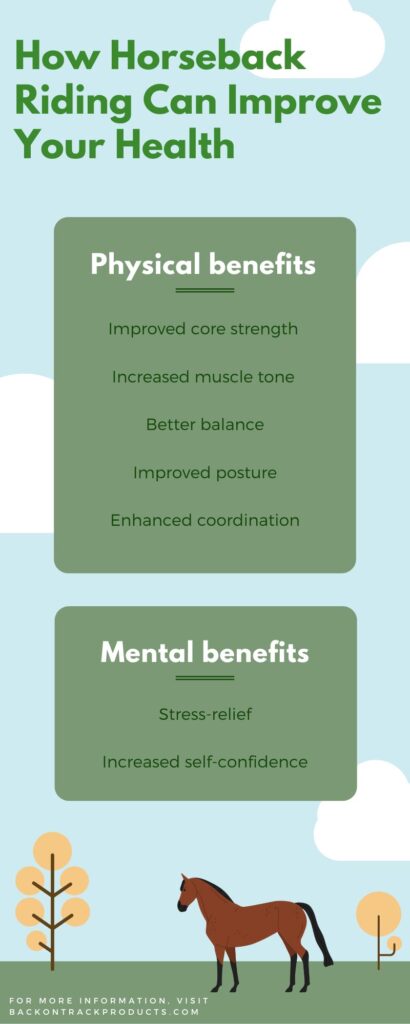
Preparing Your Body for Horseback Riding
To fully enjoy the benefits and minimize the risk of injuries while horseback riding, it is important to prepare your body adequately. Here are some essential steps to consider:
Stretching Exercises
Stretching before and after your riding sessions is crucial for maintaining flexibility, preventing muscle imbalances, and reducing the risk of injuries. Focus on stretching the muscles involved in horseback riding, such as the hip flexors, hamstrings, calves, and upper back. Hold each stretch for about 30 seconds and repeat on both sides.
Cardiovascular Fitness
Horseback riding can be physically demanding, requiring cardiovascular endurance. Incorporate cardiovascular exercises into your fitness routine, such as jogging, cycling, or swimming, to improve your endurance levels. Aim for at least 150 minutes of moderate-intensity cardiovascular exercise per week.
Strength Training
In addition to core-specific exercises, it is important to engage in overall strength training to develop a strong and balanced physique. Include exercises that target the major muscle groups, such as squats, lunges, deadlifts, and upper body exercises. Work with a qualified fitness professional to create a strength training program tailored to your needs.
By adequately preparing your body through stretching, cardiovascular fitness, and strength training, you will enhance your riding experience and reduce the likelihood of muscle strains, sprains, and other injuries.
Proper Riding Techniques for Core Strength
In addition to physical preparation, it is crucial to focus on proper riding techniques to maximize the impact of horseback riding on core strength. Here are a few key tips:
Engaging the Core
Consciously engage your core muscles throughout the entire ride. Imagine pulling your navel towards your spine to activate the deep core muscles. This will help maintain stability, improve posture, and enhance the communication between you and your horse.
Relaxing the Lower Body
While it’s important to engage the core, it’s equally important to relax your lower body. Tension in the legs and hips can hinder your ability to effectively communicate with the horse and disrupt the flow of movement. Focus on maintaining a soft and supple lower body, allowing your hips and legs to follow the natural motion of the horse.
Maintaining Alignment
Proper alignment is crucial for effective communication and balance while riding. Keep your head aligned with your spine, your shoulders relaxed, and your heels down. Avoid leaning too far forward or backward, as this can disrupt your balance and put unnecessary strain on your core muscles.
By implementing these proper riding techniques, you will not only strengthen your core, but also enhance your riding performance and overall experience.
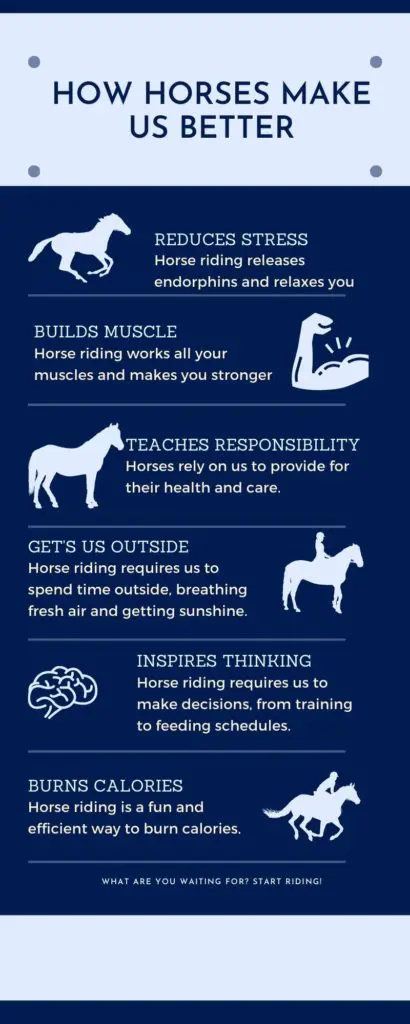
Common Mistakes in Horseback Riding that Affect Core Strength
To ensure optimal core engagement and minimize potential injuries, it’s important to avoid common mistakes that can negatively impact core strength. Here are a few mistakes to be aware of:
Slouching
Slouching is a common mistake that not only affects posture but also hinders core engagement. Maintain an upright posture, keeping your shoulders back and your chest lifted. This promotes proper core activation and enhances stability while riding.
Gripping with the Thighs
Gripping with the thighs can lead to tension in the legs and hips, making it difficult to effectively communicate with the horse. Instead, focus on maintaining a relaxed and balanced seat, distributing your weight evenly in the saddle and using your core muscles to maintain stability.
Tension in the Shoulders
Tension in the shoulders can disrupt your balance and communication with the horse. Keep your shoulders relaxed, allowing them to follow the natural movements of the horse. This will aid in core engagement and overall riding performance.
By avoiding these common mistakes and focusing on proper form, you can maximize the impact of horseback riding on core strength and improve your riding abilities.
Importance of a Strong Core in Horseback Riding
A strong core is essential for riders of all levels, regardless of the discipline they pursue. Here are some key reasons why core strength is important in horseback riding:
Improves Riding Performance
A strong core enables riders to maintain stability, balance, and control while riding. Proper core engagement allows for clear and effective communication with the horse, leading to improved riding performance and increased harmony between horse and rider.
Prevents Injuries
A strong core provides stability and support to the spine, reducing the risk of back injuries and muscle strains. It helps absorb the impact of the horse’s movements and minimizes the strain on other muscles and joints, reducing the likelihood of injuries while riding.
Enhances Rider-Horse Connection
A strong core allows riders to better connect and communicate with their horses. It provides a solid foundation for effective riding cues and allows riders to maintain a consistent and balanced seat in the saddle. This enhanced connection fosters trust and improves the overall riding experience.
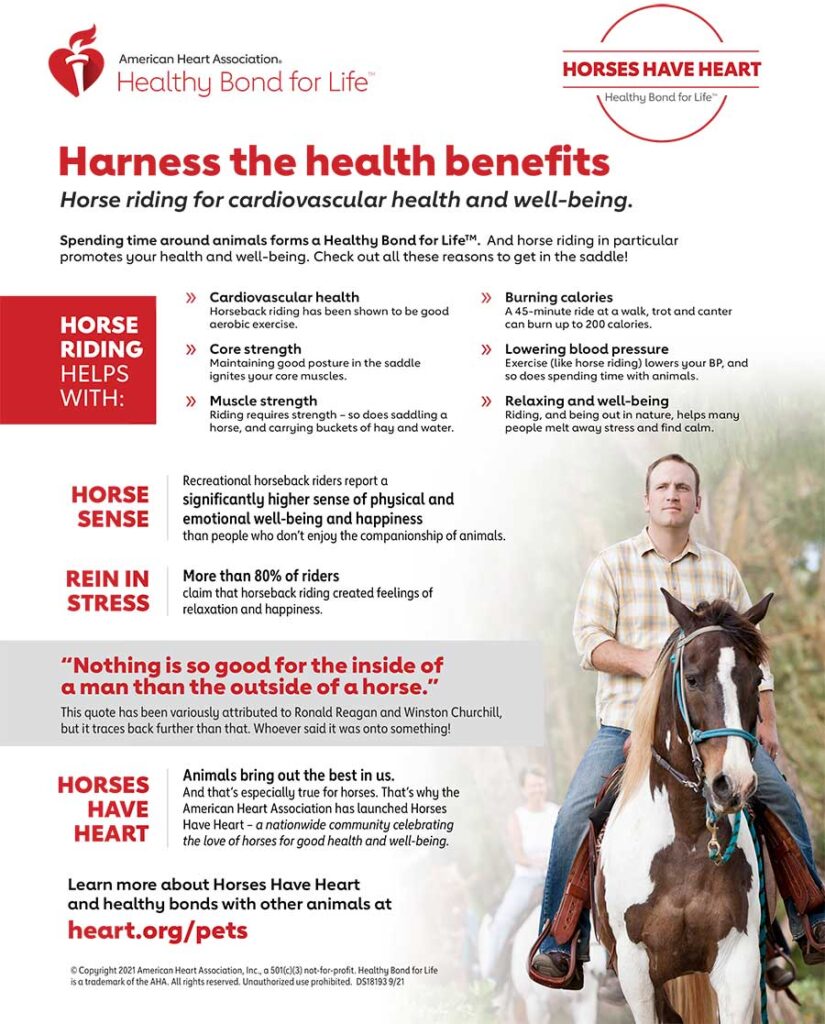
Training Programs for Core Strength in Horseback Riding
To specifically target core strength for horseback riding, there are several training programs that can be incorporated into your fitness routine. These programs focus on developing core stability, flexibility, and endurance. Here are a few popular options:
Pilates for Equestrians
Pilates is a low-impact workout that emphasizes core strength, flexibility, and body awareness. Many equestrians find Pilates to be highly beneficial for enhancing their riding performance. Pilates exercises target the deep core muscles, promoting proper alignment, stability, and control.
Yoga for Riders
Yoga can improve strength, flexibility, balance, and mental focus, which are all essential for horseback riding. Specific yoga poses, such as plank, boat pose, and downward-facing dog, target the core muscles and help develop strength and stability in the saddle.
Core-Specific Exercises
Targeted exercises that specifically focus on core strength, such as stability ball exercises, medicine ball exercises, and resistance band exercises, can be incorporated into your fitness routine. These exercises challenge the core muscles in a variety of ways and help build endurance and stability for horseback riding.
Equipment and Gear for Horseback Riding
In addition to core strength and training, having the appropriate equipment and gear is essential for a safe and enjoyable riding experience. Here are a few key items to consider:
Saddle
A well-fitted saddle is crucial for both the rider’s comfort and the horse’s well-being. It supports the rider’s position and helps maintain balance and stability while riding. Different disciplines may require specific types of saddles, so it’s important to choose one that suits your riding style.
Reins
Reins are the horseback rider’s primary means of communication with the horse. They allow for steering, speed control, and other cues. Choose reins that are comfortable to hold and suitable for your riding discipline.
Stirrups
Stirrups provide stability and support for the rider’s feet and legs. Properly sized stirrups that allow for a relaxed and balanced leg position are important for both comfort and safety.
Helmets
A riding helmet is a crucial piece of safety equipment that protects the rider’s head in case of a fall or other accidents. Always wear a certified and properly fitted helmet to ensure maximum safety while riding.
Ensure that all equipment is in good condition and properly fitted to you and your horse to minimize the risk of accidents and injuries.
Health Benefits of Horseback Riding
Apart from its impact on core strength and stability, horseback riding offers a wide range of health benefits. Here are some additional reasons why horseback riding is beneficial for your overall well-being:
Cardiovascular Endurance
Horseback riding is an excellent form of cardiovascular exercise, especially when engaging in activities such as trotting or cantering. This activity gets your heart rate up, improves circulation, and enhances cardiovascular endurance over time.
Full-Body Workout
Horseback riding engages a multitude of muscle groups, providing a full-body workout. In addition to the core muscles, riding also targets the upper body, legs, and even the smaller stabilizing muscles. This comprehensive workout contributes to overall muscle development and toning.
Stress Relief
Spending time with horses and engaging in the rhythmic motion of riding can have a calming effect on the mind and body. Horseback riding offers an escape from daily stressors and provides an opportunity to connect with nature, promoting relaxation and mental well-being.
The Psychological Impact of Horseback Riding on Core Strength
Beyond the physical benefits, horseback riding also has a profound impact on one’s psychological well-being. Here are some ways horseback riding can positively influence your mental state:
Boosts Confidence
Mastering the art of horseback riding requires patience, practice, and perseverance. As riders progress and build their core strength, they gain confidence in their riding abilities. This enhanced self-confidence often extends to other areas of life, boosting overall self-esteem.
Enhances Focus and Concentration
Horseback riding demands focus and concentration to effectively communicate with the horse and respond to their movements. This constant mental engagement strengthens cognitive skills and improves focus both on and off the saddle.
Promotes Mind-Body Connection
Developing a strong core through horseback riding requires a heightened sense of body awareness. This mind-body connection is crucial in maintaining proper posture, balance, and alignment. The cultivated mind-body connection from horseback riding can be carried over to other daily activities, promoting enhanced movement control and body awareness.
Tips for Maintaining a Strong Core in Horseback Riding
To maintain and further improve your core strength while horseback riding, consider the following tips:
Consistency in Riding Practice
Consistency is key when it comes to maintaining a strong core. Regular riding sessions, combined with core-specific exercises, will help solidify and improve your core strength over time. Aim for at least a few riding sessions per week to maintain the benefits.
Cross-Training Exercises
To enhance the effectiveness of horseback riding on core strength, consider incorporating cross-training exercises. Activities such as swimming, Pilates, and yoga can complement your riding routine by targeting different muscle groups and promoting overall body strength.
Proper Nutrition
A healthy diet is important for maintaining optimal core strength and overall well-being. Ensure you consume a balanced diet that includes an adequate amount of protein for muscle repair and recovery. Stay hydrated and fuel your body with nutritious foods to support your riding performance.
By following these tips, you can maintain a strong core and continue to reap the benefits of horseback riding for your overall fitness and well-being.
Conclusion
Horseback riding is not only a thrilling and enjoyable activity but also a fantastic way to strengthen your core. Engaging in this activity regularly improves posture, balance, stability, and coordination. Through proper riding techniques, targeted exercises, and adequate preparation, you can maximize the benefits of horseback riding on your core strength.
Remember to focus on maintaining proper form, avoiding common mistakes, and incorporating cross-training exercises into your fitness routine. By doing so, you will enhance your riding performance, reduce the risk of injuries, and foster a stronger connection with your horse.
Embrace the physical and psychological benefits of horseback riding, and enjoy the journey as your core strength grows. Happy riding!
- The Horseback Riding Dude